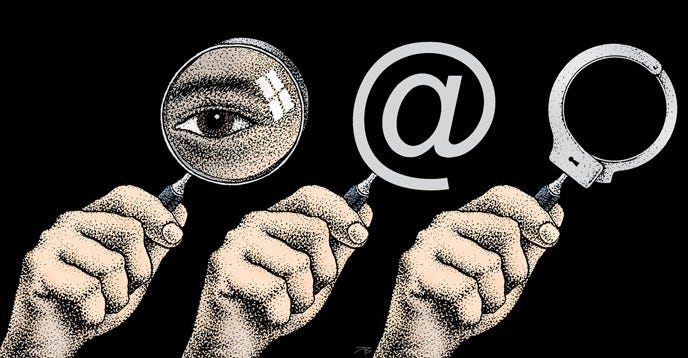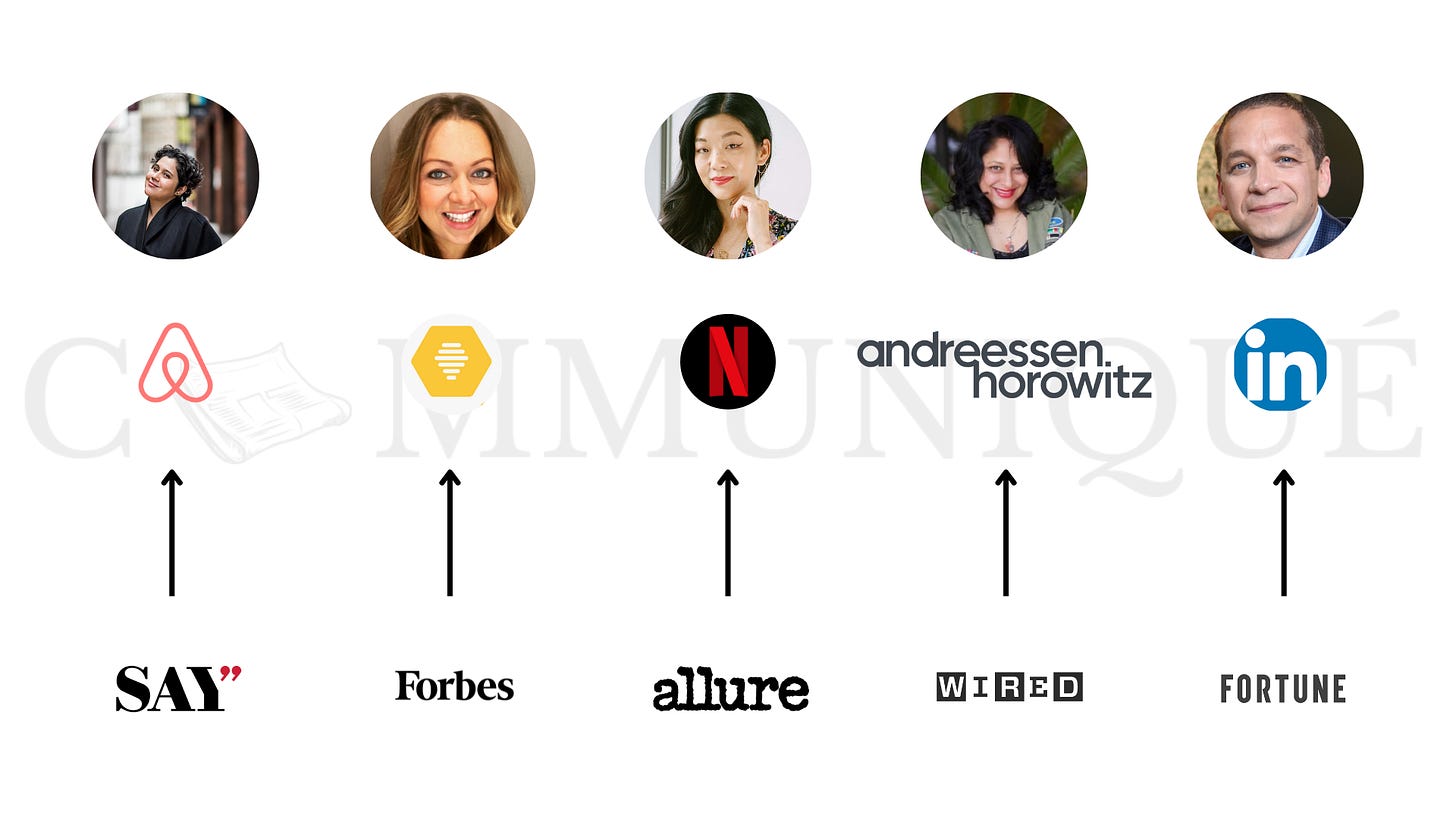Communiqué 13: Paystack’s media threat
Why tech and business media must pay attention to Paystack’s media strategy.

In April 2021, Paystack – a payment processing company – announced it was hiring a Managing Editor to help build “Africa’s largest digital business media network”. This was nothing new.
Paystack has been producing the kind of content you’d expect from an actual media company for nearly two years but on a minor scale. It publishes Decode Fintech, a newsletter and podcast that curates news and provides commentary on the fintech ecosystem in Africa.
Now, it wants to do more. Much more. It wants to build a media operation in the mould of Morning Brew, Bloomberg, First Round Review, etc.
In his announcement of the vacancy for the Managing Editor role, Emmanuel Quartey, Paystack’s Head of Growth, said:
“We genuinely believe that content - like software products - can solve real problems for merchants. As Managing Editor, you’ll lead our entire content effort supported by a team of writers, video producers, designers, and developers… But just as importantly, you’ll help fundamentally shape the story of entrepreneurship in Africa.”
On the surface, this seems like a noble cause. First, Paystack will use its platform to provide practical business insights for its customers and, in the process, help them solve problems they encounter while running their businesses. (The textbook definition of content marketing.) Then it will gradually develop its capabilities to the point where it can go toe-to-toe with any digital business publication on the continent. And herein lies both the genius and the threat.
First, the genius
The first time I listened to the Decode Fintech podcast, I immediately understood what Paystack was trying to achieve. I saw the brand-building potential and opportunity for the podcast to become a great customer acquisition channel.
For example, the pilot episode features Guaranty Trust Bank’s Group Head of ePayments speaking about the strategy and technology behind their hugely successful USSD service, 737. Midway through that episode, the host takes a “quick second to tell you about what we do at Paystack”. The chances are that if you’d listened to the podcast until the 17th minute because of the quality and relevance of the insights, you likely would be interested in the services Paystack offers.
Paystack could provide you with great value in the form of practical business insights while drawing you into its sales funnel. So, if 100 people finished listening to that podcast, that’s 100 people Paystack advertised to at zero marginal cost.
Then, the threat
The capabilities and skill set required to build a successful financial technology company are wildly different from those needed to build successful media operations. And Paystack knows this. Its current Managing Editor is the former Editor-in-Chief of TechCabal. Its next Managing Editor will likely have a similar resume and skill set. So, which industry will it attract talent from? Your guess is as good as mine.
By positioning itself as a media company, Paystack will (knowingly or unknowingly) become a competitor with the same media platforms that have told its story until now. If it executes this strategy well, it will become a headache for these traditional media companies. (By traditional in this context, I am bundling both traditional and digital media.)
If a company with little to no pressure to monetise its media properties begins to tread deeper into the territory that was erstwhile occupied by traditional media companies whose livelihoods depend on reporting news and creating content, what happens then?
Let’s juxtapose Paystack and TechCabal for the sake of illustration. Suppose both of them start competing for talent, content, and audience attention. Paystack already has a robust business that can conveniently finance its media operations, while TechCabal still has to wade through the muddy waters of the media business. Also consider that both of them occupy different industries with lopsided market sizes. One plays in an industry that, despite its relative nascence, can attract $200-million exits and birth multiple unicorns. The other plays in an industry that is struggling globally and even more so on the continent. Given all of these factors, who do you think will win in the end?
Where really is the threat?
I must clarify at this point that this topic is only a problem depending on what side of the aisle you’re sitting on.
For the audience, this is a non-issue. We’ve seen over time how fewer people are concerned with the name of the outlets through which they get their news or information. As long as they perceive the outlet to be credible, everything else pales in comparison. Most people consume content on Facebook, Twitter, or via Google, and it matters less to them the name of the publisher that put it there.
For companies like Paystack, this is one more upside to the Internet. It allows them to bypass traditional middlemen and go straight to customers. The advent of the Internet means they can now achieve the same scale of engagement previously attainable only by the media. Now, individual organisations can, in theory, wield just as much influence as the media has on how people think and behave.
However, for the media – especially business and tech media – this development poses a threat. It further weakens their already loosening grasp on people’s attention and dilutes their ability to influence the audience and make money off their eyeballs. It also poses ethical issues.
In journalism, one of the first things we learn is that the press is the watchdog of society. To play this role, it must criticise and hold people in power (and key figures in society) accountable. To do this, it requires sources, and those sources are members of the same society it must keep in check. So, there is a delicate ethical balance to uphold here.
However, what happens when those members of society decide that they can do the job of the press as well as the press can, something we’re starting to see more of with the evolution of social media and user behaviour online? Who holds society accountable then? Of course, this is a rather general example, but it sheds some light on the ethical dilemmas that will arise.
The point is that there are certain terrains that the media is motivated to drive into and certain dark spots that it is obliged to probe that no company’s content marketing vehicle is neither motivated nor obliged to drive into, considering that the aim of content marketing is ultimately to sell. There are hard questions that the media is (ideally) obliged to ask that no company’s content marketing strategy is even motivated to consider. Yet, attention is zero-sum, a scarce resource that people only hand out to whoever has the most resources to attract it.
A global problem
In the early 2000s, former Financial Times journalist and founder of Silicon Valley Watcher, Tom Foremski, introduced the idea of corporate brands taking up the mantle of media operations. To him is attributed the famous “Every company is a media company” quote. A nascent concept at the time, it has since grown to become the norm with the advent of the Internet, although predominantly in the West.
In 2018, Stripe (Paystack’s parent company) began publishing books while it also owns a collection of digital publications. In the same year, Goldman Sachs started to push its podcast, Exchanges at Goldman Sachs, out to a broader audience, but it had already been publishing it since 2015.
In 2019, Airbnb began publishing a print magazine you can subscribe to at $18/year for six issues. Bumble, the dating app, launched its magazine. And Netflix launched its entertainment journal, Queue.
Most recently, in 2021, venture capital firm Andreesen Horowitz (also known as ‘a16z’) officially launched Future, a platform for opinion pieces and content that will shape how people think about the future of technology and society.
What all these publications and media properties have in common is that they are all industry-specific and make no attempt to be mass-market products. Still, there’s no doubt they will compete for attention and talent. And there is no doubt that they are content marketing tools. Furthermore, most of their top hires are from, you guessed it, traditional media companies. (Again, I’m bundling traditional and digital media here.)
Airbnb’s Editor-in-Chief, Janine Kahn, was once the Editor-in-Chief at Say Media. Clare O’Connor, Head of Editorial Content at Bumble, was a staff writer at Forbes. Netflix’s new VP of Editorial and Publishing, Michelle Lee, was Allure’s Editor-in-Chief for over half a decade. Sonal Chokshi, a16z’s Editor-in-Chief and Editorial Partner, used to be a Senior Editor at Wired. LinkedIn’s Editor-in-Chief, Daniel Roth, was the Managing Editor at Fortune and a Senior Writer at Wired.
And then you have Paystack. Its current Managing Editor is the former Editor-in-Chief of one of Africa's most prominent tech publications. Furthermore, its incoming Managing Editor will have to expand the team and make some hires. You don't have to think too far to know where that talent will come from.
These are just some examples, and there are many more. But I know you get where I'm going with this.
Globally, more companies are waking up to the potency of content marketing. Attention is a zero-sum game, and you have to capture it to sell your products and services. In the past, companies went through the media to get to their customers within an audience because they didn’t have options. Now, they do. Now, they can go directly via the Internet and build their own vehicles of influence driven by editorially savvy hands and minds.
Paystack’s foray into this terrain will be one of the most significant attempts by a company to play at scale with this strategy on the continent. And while it might be the one of the first, it certainly won’t be the last.
Denouement
In the past few months since I started writing this essay, I have spoken with editors and journalists who are worried about the implications of what Paystack is trying to do. I have also talked to several other people who are simply curious. It’s easy to miss the undertone if you aren’t paying attention or aren’t rooted in the ecosystem.
Tech and business publications, for sure, will be most affected, given that much of what they do heavily leans towards content marketing.
The silver lining is that this is ultimately a question of incentives. Paystack (and other companies that will take up this mantle) are incentivised to produce content that their customers find valuable. In some cases, they will wade into the waters of opinion moulding. That’s as much competition with the media as there will be. As Margit Wennmachers of a16z iterates, Future has no intentions of being a news operation. Instead, it will focus on overarching subject matters and only touch on news stories as they impact those matters. So also, these companies will focus on producing content that helps build their brands and attract customers.
For so long, African tech and business publications have served as informal publicists of their ecosystems, with some exceptions. That strategy is no longer sustainable. Society will always need journalism, but journalism that cannot be differentiated from content marketing and Public Relations is impotent and puts its purveyors in danger. Society will always need institutions to keep it in check, and no one is better equipped to do this than the media – we’ve seen Facebook, Twitter, and other big tech platforms fail woefully at it.
Now more than ever, tech and business publishers need to find answers to the hard questions that I know they have been asking for so long: “How do we move beyond advertising as a primary revenue source?” Because without answering this question, they will forever be stuck in their role as ecosystem mouthpieces while the ecosystem itself continues to develop beyond needing them and into becoming competitors.
One more thing…
I’ve been writing Communiqué for over a year now, and each edition requires hours (sometimes days and weeks) of research, thinking, writing, editing, and design. So, if you find the insight that I provide valuable, please do me a favour: like the post and share it directly with at least two people you think will love it.
Also, if you like the quality of work that goes into the newsletter, I offer the same quality of writing, research, and consulting services to corporate clients. Reach out to me and let's talk.
PS: Thank you to Jane Efagwu, Olaoluwa Oyedele, and Hassan Yahaya for helping me edit and refine the points in this essay.
If you enjoyed reading this, please like the post and tell other people about Communiqué.







This is a great piece and is really insightful though I disagree with one minor point - in theory, the media is supposed to be the watchdog of society, criticizing everything from billionaires to governments, policies, and big tech, but now the internet (and attention economy) has flattened the playing field and threatened to obliterate their relevance. The media is in crisis partly because now everybody is on the internet fighting for clicks, social media has changed people's news consuming habits over the past 2 decades and the advertising model of monetizing internet content has compromised some of the otherwise credible media outlets. Then we also have startups like Medium and substack who take a page from the playbook of companies like onlyfans and substack - who are decoupling content producers from their publishers and going direct to consumer (readers), over the past few months we've seen some of high profile staff writers of notable media houses in the US quitting their jobs and cutting cheques with Substack. The summary of my long ramble is that everybody is coming for the media's lunch, the media model will have to evolve to keep with the times. Nigerian companies like Paystack are only the beginning, I predict that more Nigerian startups are going to come for local media's relevance in the coming months and years, the Nigerian tech space is not far behind.
A very interesting read! Love the insights shared